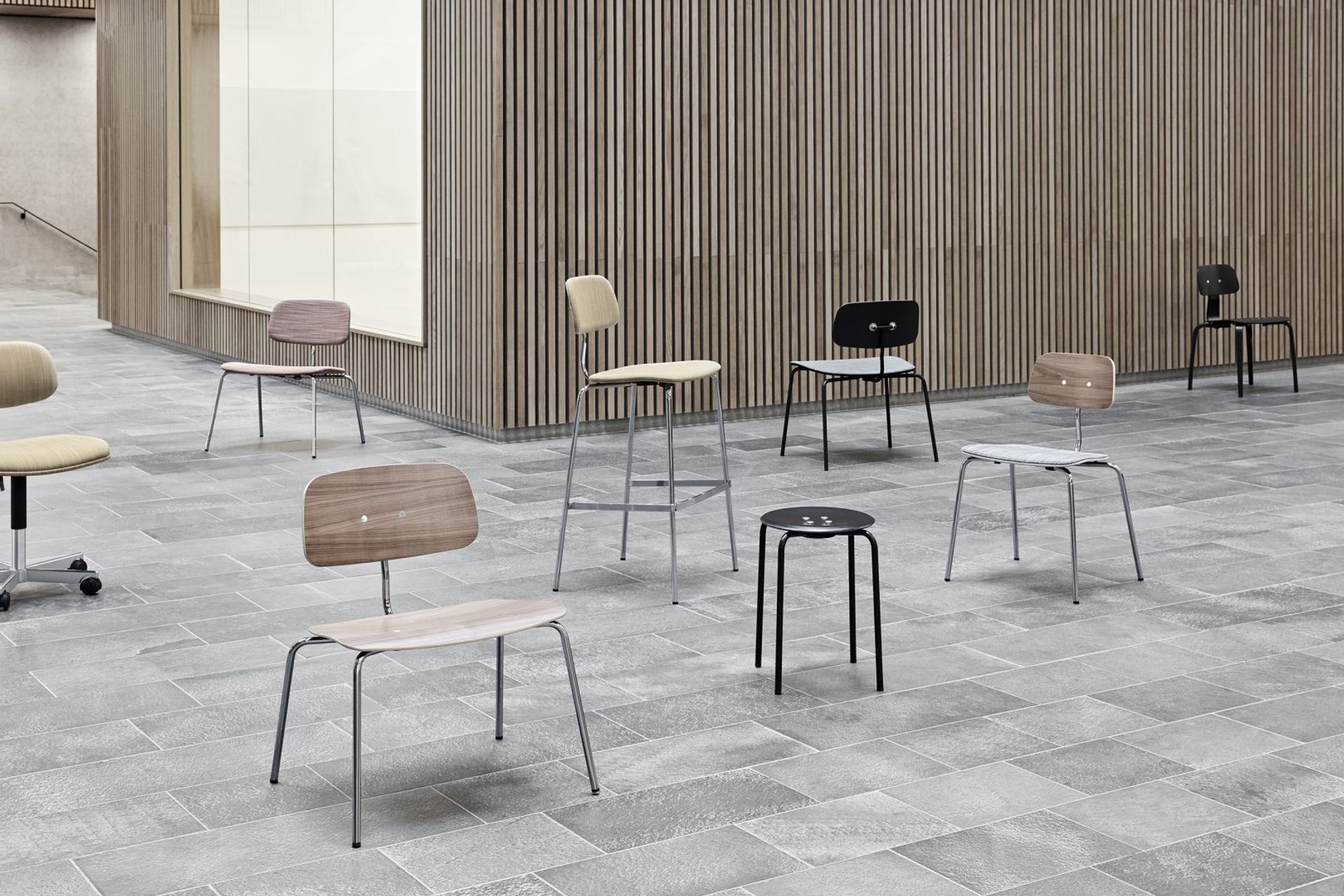Rethinking functionality
Written by
12 May 2019
•
4 min read

In 1958, Danish architect Jorgen Rasmussen designed a simple chair that was quickly propelled to global fame. Of late, the now iconic chair has seen a number of new iterations - all designed by its original creator. We spoke to Katalog about the Kevi chair and its contemporary place in the design world.
The instant success of a chair designed by a recent architectural graduate in Denmark in 1958 was due to many factors, but perhaps most importantly it was the inclusion of a revolutionary type of wheel that propelled it to global fame shortly after release.
In the process of designing the chair, young architect Jorgen Rasmussen reinvented the wheel – effectively splitting the traditional office chair wheel in two to create the double wheel caster. At the time, it was a revolutionary design element that allowed for chairs to have a new level of maneuverability and improve working conditions for those seated at a desk.
Today, the double wheel caster is an everyday design object most wouldn’t even consider - but implicitly expect. It is a design element that has become synonymous with office furniture and remains as relevant today as it was when it was invented in 1958.
However, it is not just the double wheel caster that set the Kevi chair apart. It is the timelessness of the design; beautiful in its simplicity with no element superfluous to function, it is simply a chair designed for a purpose. “The principle of the Kevi chair is simple: the better you sit, the more you get done,” Katalog’s Greg O’Flaherty says.
Katalog is the exclusive distributor of Kevi chairs in New Zealand, and recently the Kevi family has expanded with original designer Rasmussen creating a range of iterations rendering the Kevi chair more than a desk chair. “With the latest additions to the Kevi family, it is now a chair fit for various purposes in the home or office, including as an occasional chair, a dining chair and as a stool,” Greg says.
Despite the latest iterations, the Kevi chair family remains true to its origins - beautifully simple interpretations of a versatile seat.
Initially, the Kevi chair incorporated a five-star base on double wheel casters - a seat imagined as an office chair. Today, the Kevi chair is available in various forms ranging from a stool to a four-star base, and in different materiality.
“Originally, it was made with formed wood. Now, it is made with a variety of materials ranging from the Kevi Air, which has a perforated polyurethane back and seat, to fully upholstered options and the traditional wood chair,” Greg says.
“The Kevi chair family is a range of seating options that always fit seamlessly into an interior because of the timelessness of the pieces. There is nothing superfluous about the Kevi chair (or stool). Its refined design has remained relevant because of this; it is pared back and beautiful in its simplicity.
“Perhaps the other element of the design that has led to its ultimate relevance spanning decades is the fact that every element is visible - nothing is hidden or additional to the functioning of the chair.
“Ergonomically, the refined design means there is no need to incorporate padding or any other element for comfort. Sitting on the wood form is comfortable, while the back, seat and height can all be adjusted to create the optimal sitting position.”
Katalog designs and supplies premium furniture, lighting and hardware for residential and commercial architectural projects. Established in 1997, Katalog works with local and European suppliers to offer exclusive ranges to the New Zealand market.
Find out more about the Kevi chair by visiting Katalog on ArchiPro here.

